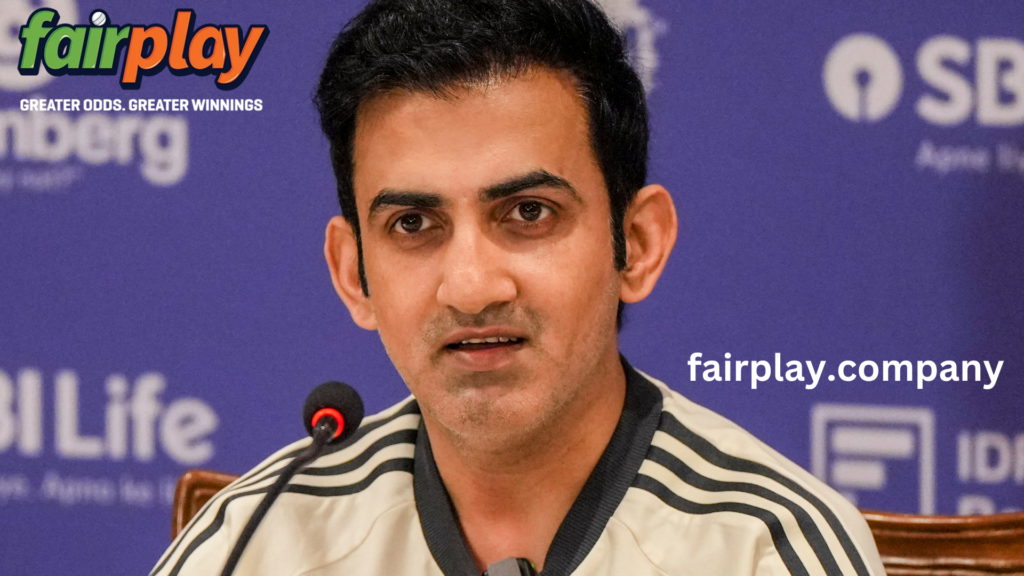
The anticipation surrounding the imminent Champions Trophy 2025 reached its peak as Gautam Gambhir, the chairman of selectors, introduced the India squad. Cricket fanatics have been eagerly preparing to appear which game enthusiasts made the cut for one of the most prestigious tournaments inside the cricketing calendar. With a mixture of enjoyment and more youthful competencies, the squad displays India’s schooling and ambition to reclaim their glory on the worldwide level.
The Squad Breakdown
Gautam gambhir, in his address, highlighted the purpose within the decreased lower back of the picks. The squad competes with a balanced combination of pro campaigners and developing stars, ensuring stability and freshness.
Batsmen: Rohit Sharma (captain), Virat Kohli, Shubman Gill, and Suryakumar Yadav shape the backbone of the batting lineup. The inclusion of Ruturaj Gaikwad and Tilak Varma gives younger strength to the squad.
All-Rounders: Hardik Pandya (vice-captain) and Ravindra Jadeja are the most excellent all-rounders, bringing depth to each batting and bowling.
Wicketkeepers: KL Rahul and Ishan Kishan provide flexibility and alternatives in the middle order.
Bowlers: Jasprit Bumrah leads the tempo assault, supported with the aid of Mohammed Shami, Mohammed Siraj, and Arshdeep Singh. Kuldeep Yadav and Yuzvendra Chahal are the primary spinners, with Washington Sundar together with variety.
Fairplay Login – Your Key to Unlimited Entertainment
Access your Fairplay Login account effortlessly and securely. Enjoy a seamless login experience, explore thrilling games, and unlock exclusive rewards designed for your ultimate entertainment journey.
Gautam gambhir’s Vision for the Team
Gautam gambhir emphasised the significance of adaptability and resilience in the Champions Trophy. He stated, “The situations in 2025 will be named for versatility, and we’ve been given determination on game enthusiasts who can thrive beneath pressure.
This squad suggests our imaginative and prescient of gambling competitive but balanced cricket.”
Experience Counts: The inclusion of veterans like Rohit Sharma and Virat Kohli ensures that the group has leaders who can deal with excessive-strain conditions.
Youthful Dynamism: Players like Shubman Gill and Tilak Varma deliver glowing strength, vital for tough conditions and tough opponents.
Bowling Versatility: With an aggregate of tempo and spin, the bowling unit is designed to make the maximum number of pitch situations.
Challenges Ahead
While the squad is formidable, the road to Champions Trophy achievement is in no way easy. Gautam gambhir said the traumatic situations that lie earlier:
Adapting to Conditions: The match’s venues are anticipated to provide several pitch situations, stressful adaptability from game enthusiasts.
Injury Management: Ensuring that key players stay in form and in form in the course of the occasion is vital.
Strong Opposition: Teams like Australia, England, and Pakistan pose huge threats, making steering and execution critical.
Players to Watch
Several gamers within the squad have the functionality to be organization-changers. Gautam gambhir specially stated some names to keep an eye fixed steady on:
Jasprit Bumrah: Returning from harm, Bumrah’s lethal tempo and accuracy make him a key weapon in India’s arsenal.
Hardik Pandya: As the vice-captain, his management and all-round abilities is probably important.
Shubman Gill: In sublime form, Gill’s functionality to anchor innings or accelerate at will makes him critical .
Kuldeep Yadav: His wrist spin might be pivotal in breaking partnerships on spin-first-rate tracks.
Fan Reactions
The declaration with the useful resource of Gautam gambhir has generated a big buzz among cricket lovers. Social media structures are abuzz with discussions approximately the squad. While maximum fans are incredible, a few debates have arisen about exceptional omissions and the steadiness of the agency.
Positive Reactions: Fans praised the inclusion of more youthful abilities like Tilak Varma and the cross back of senior gamers like Bumrah and KL Rahul.
Debates: The absence of Shikhar Dhawan and Ravi Ashwin has sparked discussions, with enthusiasts questioning the cause within the lower back of those picks.
Historical Significance of the Champions Trophy
The Champions Trophy has constantly been a healthy of immoderate stakes. For India, the in shape holds precise importance:
Previous Success: India received the Champions Trophy in 2013 under MS Dhoni’s control, defeating England in an interesting last.
Strong Contenders: Over the years, India has continuously been many of the pinnacle-acting organizations within the occasion.
Gautam gambhir said, “This squad has the capability to copy beyond successes and bring the trophy domestic. Our attention is on gambling fearless cricket and seizing important moments.”
Preparation Strategies
To make certain the group’s readiness, Gautam gambhir and the manage have noted a whole plan:
Training Camps: Intense durations specializing in health, skills, and suit scenarios.
Warm-Up Matches: Scheduled exercising video video games in competition to top agencies to super-tune techniques.
Mental Conditioning: Sessions to assist game enthusiasts stay focused and deal with pressure conditions.
Looking Ahead
As for the Champions Trophy strategies, Gautam Gambhir remains constructive about India’s possibilities. The squad’s mixture of enjoyment, expertise, and training positions them as strong contenders. Fans all through the globe are eagerly searching ahead to the group’s normal common performance, hoping for each specific ancient triumph.
Fairplay Login: Secure Access to Gaming Excitement
Fairplay Login and start your adventure. Experience hassle-free access to premium features, exciting games, and a secure platform built for your entertainment and gaming needs.
Conclusion
The declaration of the India squad with the aid of Gautam gambhir has set the volume for an exciting Champions Trophy 2025. With a well-balanced group and a smooth imaginative and prescient, India is poised to make a vast effect. As cricket fans system up for the motion, the highlight remains on the sport fanatics and their journey to glory. The Champions Trophy ensures to be a party of cricket, and India is prepared to upwardly push to the event.

